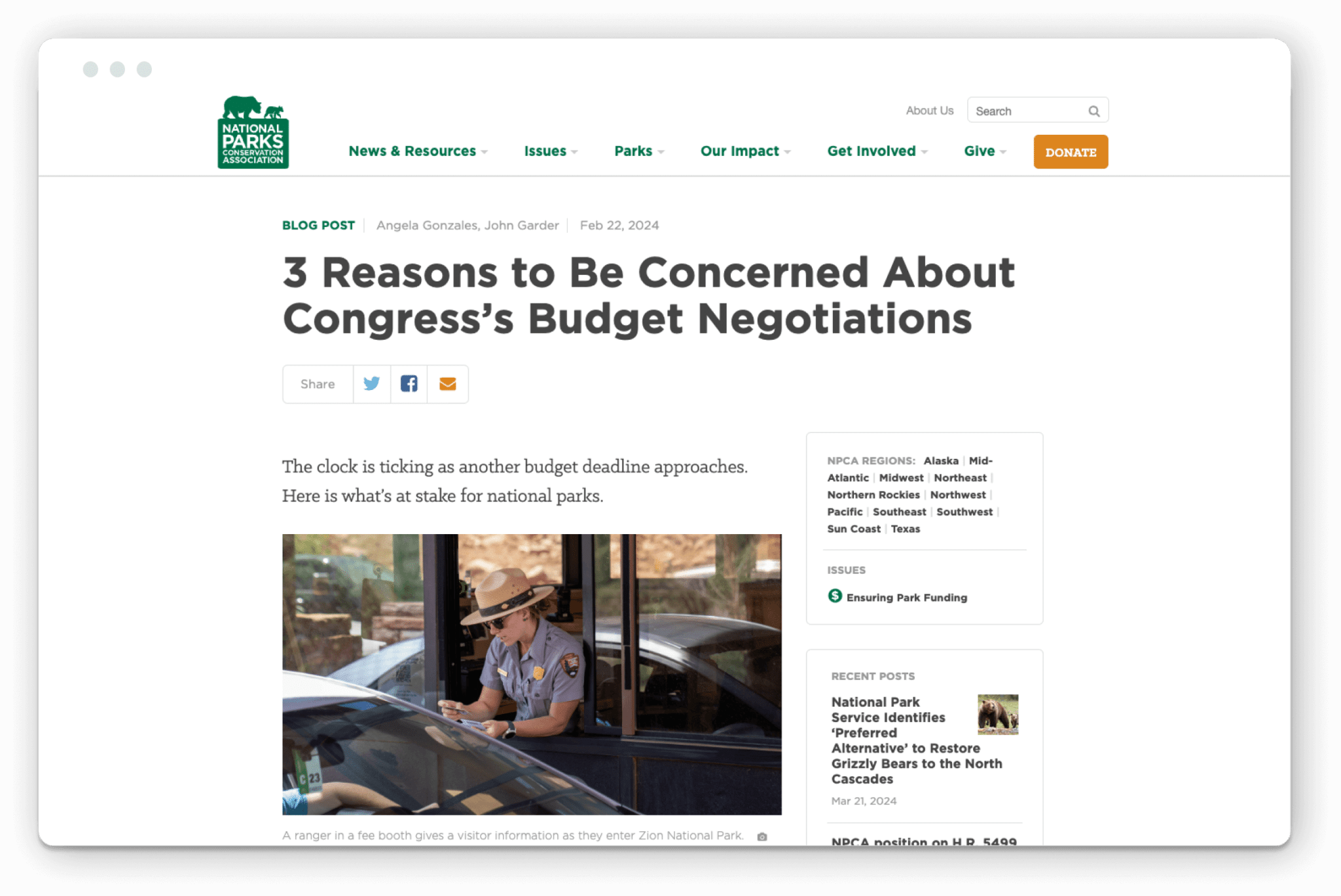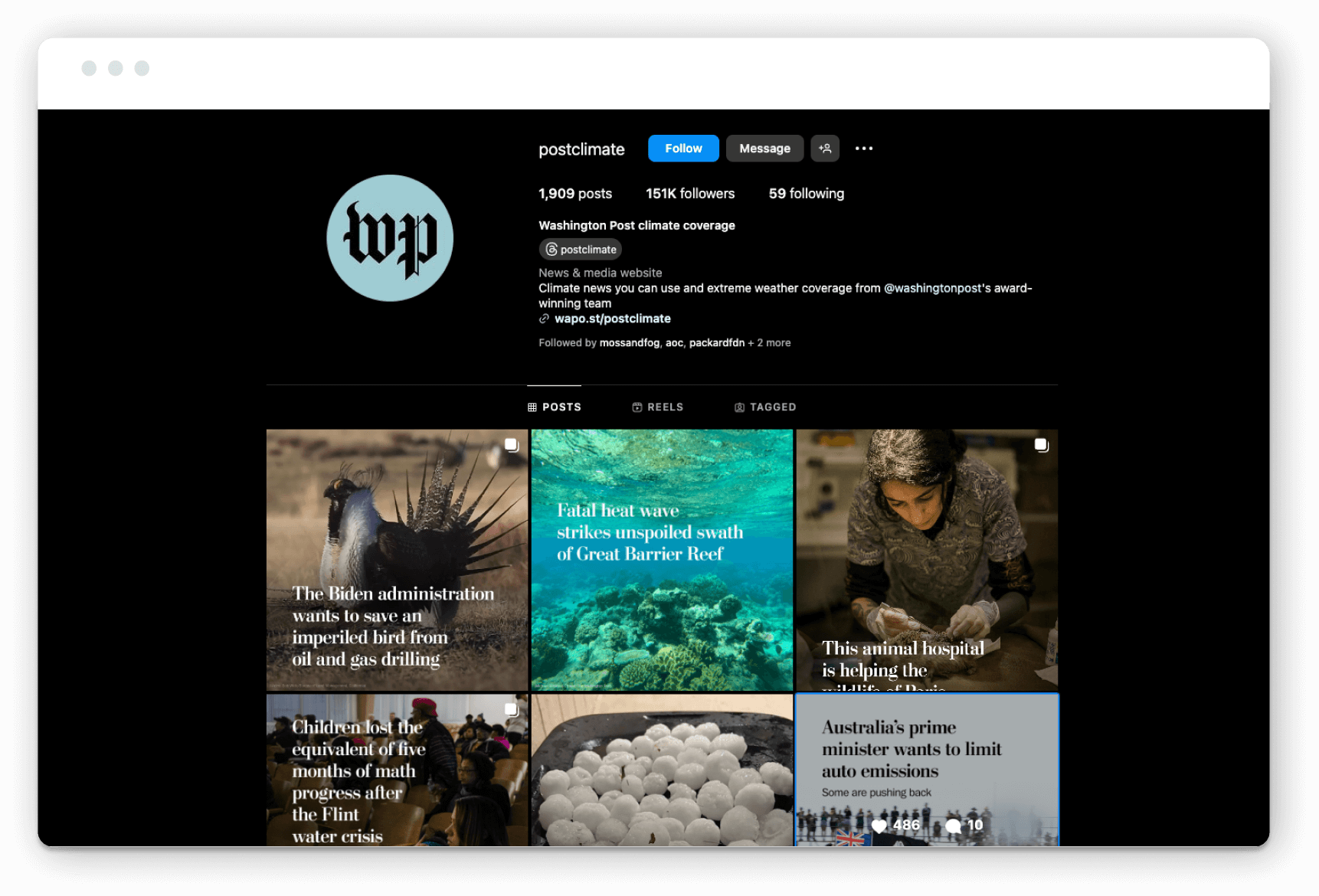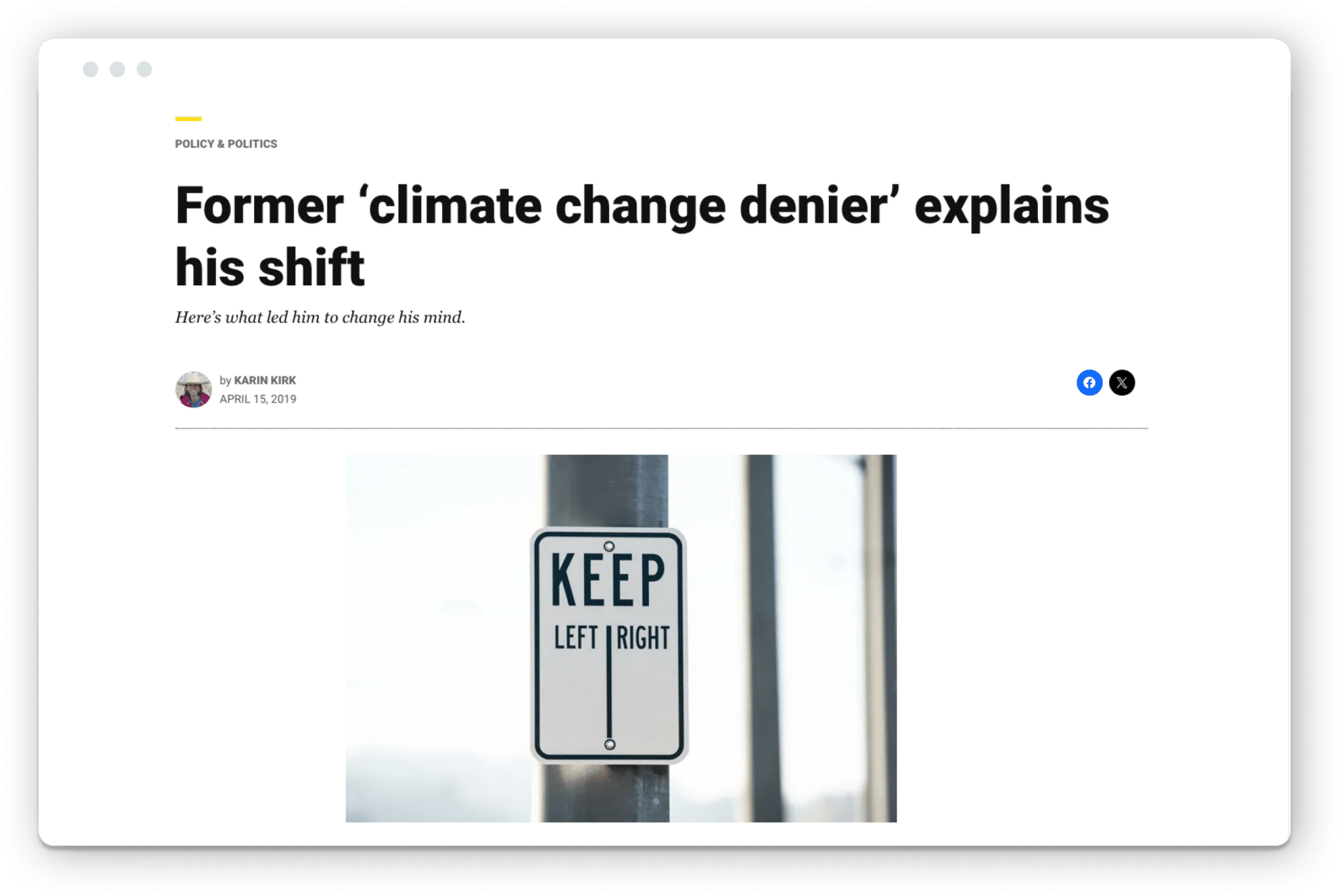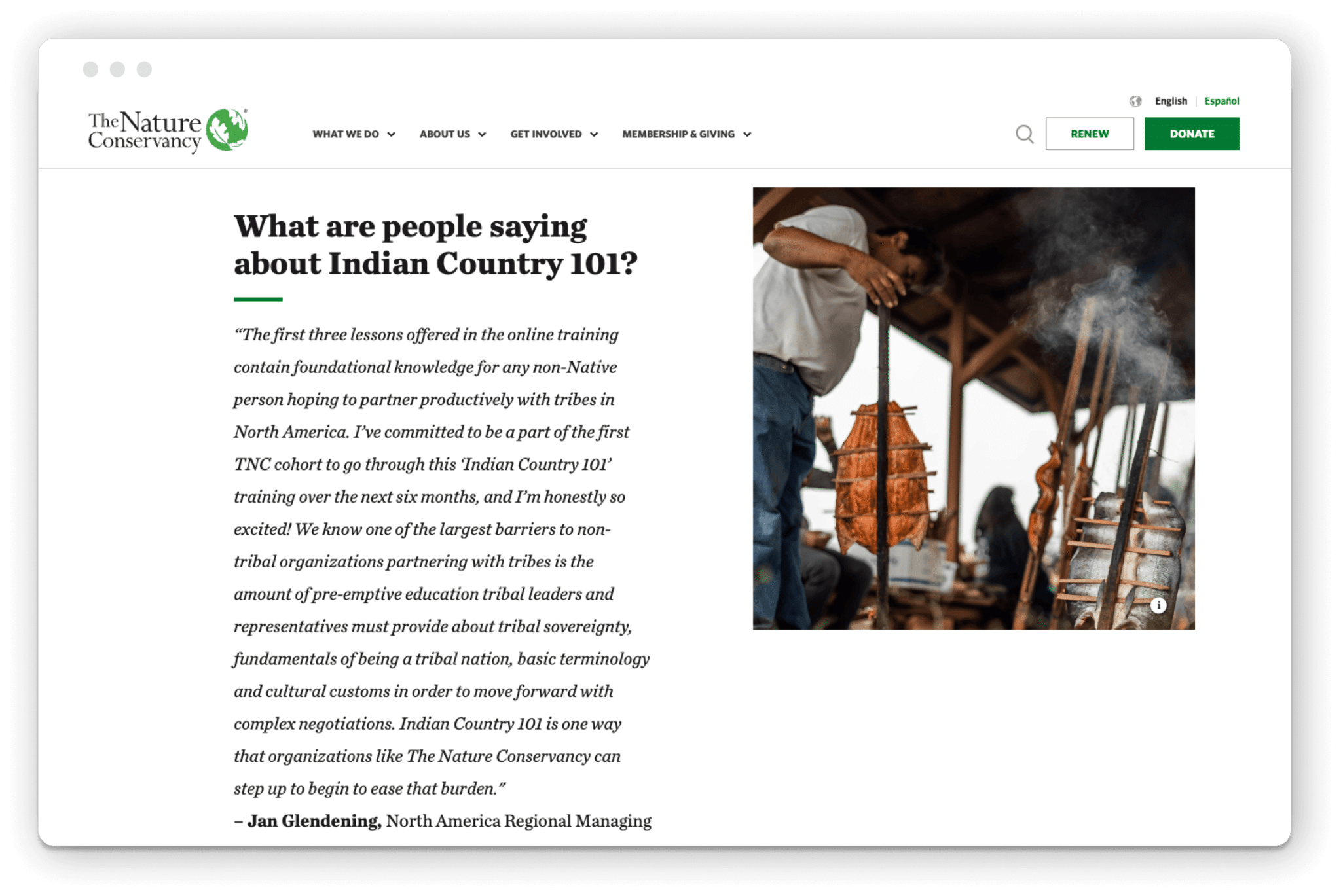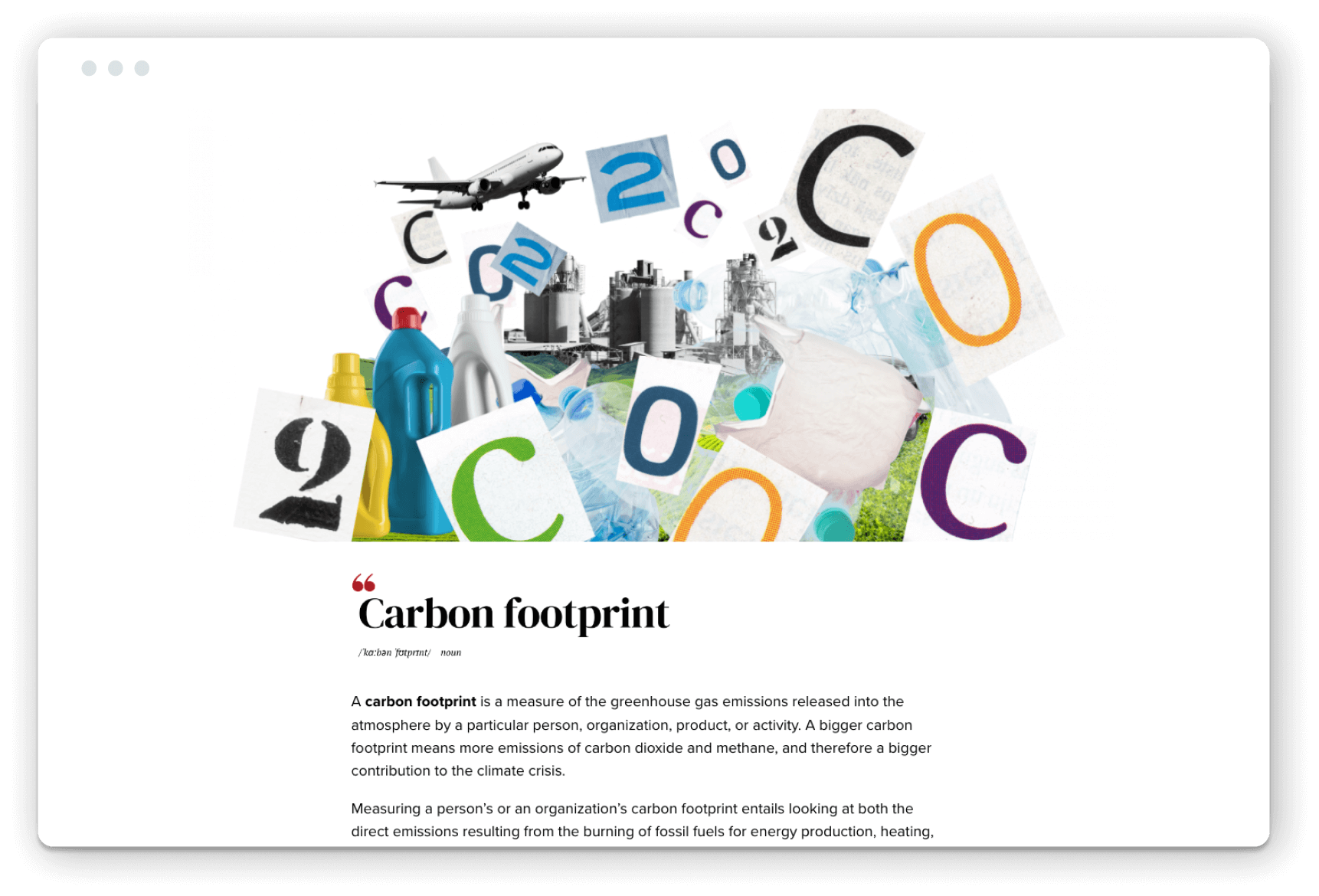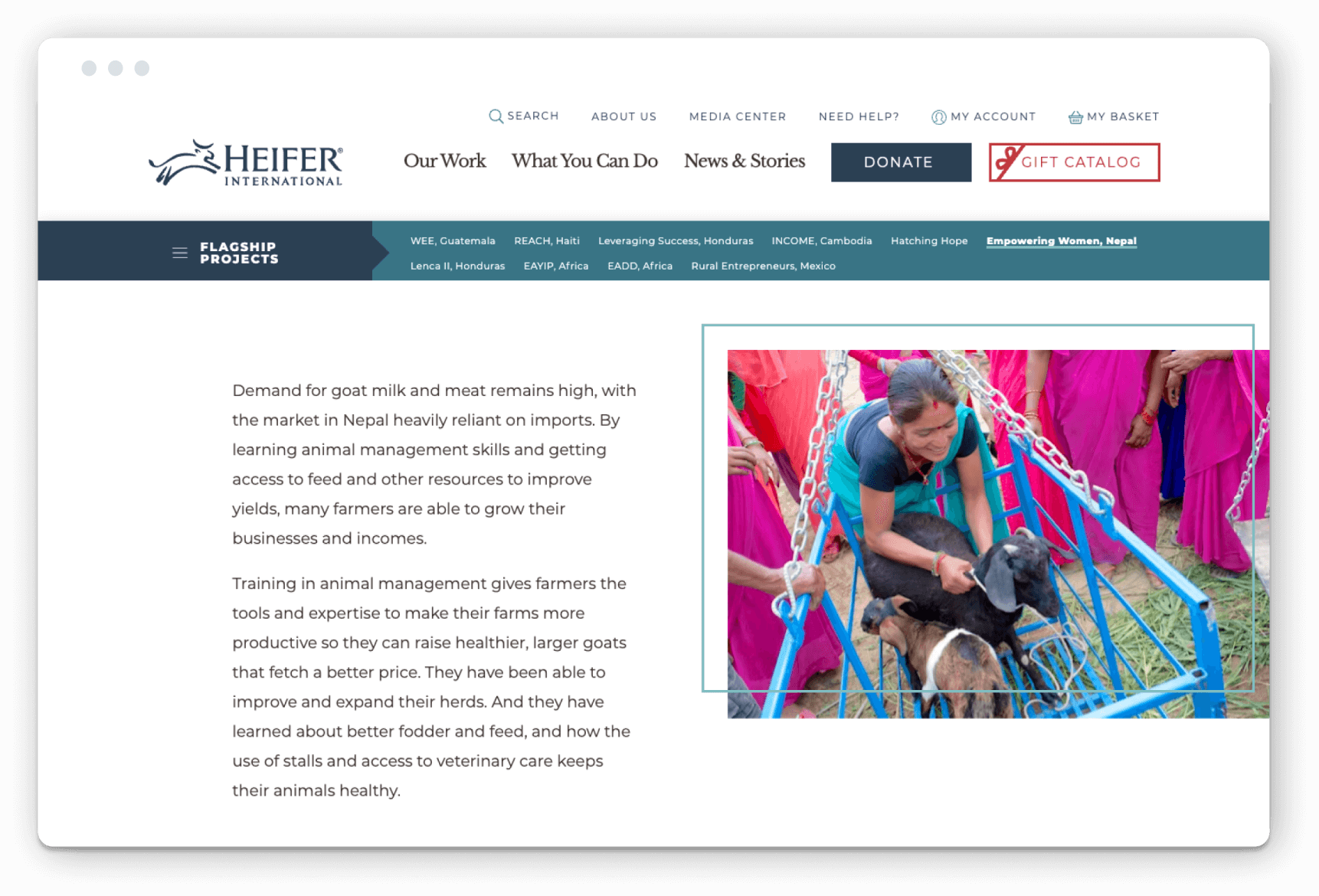Did you know that kids born today could be just 16 years old when all of the ice in the arctic has melted? It doesn’t surprise me. The amount of carbon dioxide in the atmosphere is 50% higher than pre-industrial levels, so anything goes in 16 years I guess—well anything goes for whatever species we have left. We’re in the middle of the sixth great extinction, with more than 1 million species on the brink of disappearing forever. And the outlook for one species—ours—is bleak, too: For the first time in decades, world hunger is increasing and will worsen with climate change; in 70 years a predicted 200 million people will live below sea level; and the WHO predicts an additional 250,000 deaths from climate change per year between 2030 and 2050.
It’s too late. Anything we do on climate change from here is just rearranging the deck chairs on the Titanic.
Now stop. Take a step back. Having read those first two paragraphs, how do you feel? Do you feel hopeful? Inspired to take action? Ready to make a difference? I don’t.
What I wrote above is a master-class in ineffective climate communications. Fear mongering doesn’t work, but still, in my research on climate branding and climate communication, I see hungry polar bears, overwhelming statistics, and fear tactics abound.
The good news is that there are research-backed, tried-and-tested climate communication frames and messaging that make people feel inspired, informed, and empowered to act. I’m a climate optimist, and that’s not because I think that things are looking good for the planet (I don’t right now). I’m an optimist because, in everything from my copywriting to door-to-door canvassing, I’ve seen people take up the call to act on climate. I know that together, our voices and our actions on climate can resonate everywhere from the ballot box to corporate boardrooms.
We just have to make sure those voices compel as many people as possible. When we’re tackling an issue as sweeping and (I’ll say it) scary as climate change, we can’t waste time on ineffective, fear-mongering messages. We need to use the best, research-backed frames and tactics to bring as many people into the fold as possible. Thankfully, researchers, organizers, academics, and communicators have dedicated their careers to this exact conundrum: How do we change hearts and minds to mobilize people on climate?
This Earth Month, I’m teaming up with Digital Strategist Kaylee Gardner to explore the rules for effective climate communication with examples to inspire your organization.
Rules for Effective Climate Communication Framing & Messaging:
- Don’t Fear Monger
- Unite, Don’t Alienate
- Be Solutions-Oriented & Provide Paths for Action
- Make it Local, Urgent, and Personal
- Use Data and Cite Scientific Consensus
- Leverage Narrative Storytelling
- Elevate Marginalized Voices
- Make it Accessible
- Use Ethical Visual Storytelling Best Practices
Don’t Fear Monger
Inviting concern and urgency on climate change is important for effective messaging, but trying to scare people into action is not an effective approach. As we mentioned in the introduction, research actually shows that fear is extremely immobilizing for many people. Our communications need to encourage learning and inspire action, not petrify people with fear. As it stands, climate change communications could benefit from a bit of optimism—which is just what The Climate Optimist Newsletter provides.
The Climate Optimist Newsletter is a monthly newsletter created by The Harvard TH Chan School of Public Health Center for Climate, Health, and The Global Environment. The newsletter focuses on climate progress that has been made (rather than what has yet to be achieved)—and it does so without downplaying the need for further action and future commitments. For instance, in last year’s February issue, writer Marcy Franck checks in on the progress of new climate laws, focusing on celebrating all of the almost unprecedented progress that has been made in the last four years. The newsletter also looks to the future including where we can and should focus our efforts.
The Climate Optimist is our first positive climate communication example because it offers a breath of fresh air in a sea of depressing headlines. It invites hope, using real stories on meaningful climate progress and research. And it’s just one example of the many organizations that are moving away from negative framing techniques and toward optimism to inspire action.
Unite Don’t Alienate
Climate change can be a very divisive topic. And to solve the climate crisis, we need to draw on the old adage: there is strength in numbers. To achieve that strength, we can prioritize bringing people together with non-polarizing climate communication. One organization that consistently does a great job of bringing people together is The National Parks Conservation Association (NPCA).
People from all parties with different political priorities agree: the parks are worth protecting. In fact, 65% of voters believe in strengthening the national park system. The NPCA uses this sentiment to draw a critical connection: the connection between climate change and the conservation of our national parks. When the NPCA refers to additional funding for climate change projects, they write that, “these projects not only respond to the pressing need to prepare for climate change, but also curb climate change impacts on the cultural and natural resources within America’s most treasured places.” This emotional appeal is a great example of finding common ground to unite people around a polarizing issue. It also emphasizes the urgency of coming together to solve these problems together.
Similarly, in another blog, the NPCA speaks about the consequences that Congress’ budget cuts could have on climate change and other compelling issues. They explain how budget cuts mean staff reductions, under-resourced trails and roads, and failure to adequately protect vulnerable animal species. This framing turns a nebulous “budget cut” into concrete consequences. It also critically focuses on common-sense issues to unite and mobilize audiences.
No matter what actions we take on climate, we’re all in this together. When we lean into issues that unite and tap into our collective power, we can build a more resilient world for the generations to come.
Be Solutions-Oriented & Provide Paths for Action
We’ve established now what doesn’t encourage action (using fear-based messaging), but what does encourage audiences to change their personal choices or join larger efforts to combat climate change? Well, we can start by demonstrating a path forward—by clearly providing information on solutions and potential action paths in our communications. This research-backed approach is called “solutions-oriented framing,” and you can put it into action by clarifying your organization’s approach on our website or outlining action opportunities in your newsletter. Two of my favorite solutions-first climate messages use the power of video. Let’s explore.
SELC, Southern Environmental Law Center, believes that solutions for a healthy environment start in the South. In the primer video on their website, they explain how they’ve defended our environment through “securing clean air and water protections for communities across our region, defeating repeated attempts to bring offshore drilling to our coast, and enforcing the removal of over 250 million tons of toxic coal ash.” In two minutes, SELC clearly outlines how they’ve worked toward solutions but promises that they’re not done yet. This is an especially effective approach given the widespread stereotype that the American South does not have the same commitment from citizens and politicians on climate change as the North and West Coast. The SELC website also directs users to a Get Involved page giving them options to donate and take actions such as sending emails to their local politicians/leaders about urgent environmental issues.
We also love the Rainforest Alliance’s ”We’re All In” campaign video, which tells us that pessimism is out, they’re all in on tackling climate change, and we can join in the alliance to be all in too. In the fun and whimsical video, audiences are presented a split screen juxtaposing the negative rhetoric around personal sustainability’s futility with positive framing around how, together, we actually can make a difference.
A young woman attempts to make her daily tasks more sustainable, but is constantly bombarded by a man telling her how minimal the impacts of her efforts are. Then, the young woman flips the rhetoric and tells the man all about the progress being made partially by her individual actions. The video demonstrates the power in messaging that lifts people up rather than puts them down—and it’s fun. It certainly inspires me to continue making responsible daily choices like composting more and buying more products with the Rainforest Alliance Certified seal on it.
And bonus points for how effective their website is at encouraging action. Under the For Individuals section, you can look at a full list of the actions you can take right now to support the rainforests and our climate as a whole.
Make it Local, Urgent, and Personal
Another proven way to inspire action is to show people how they are affected by climate change. It may sound simple, but climate change may feel like a vague and far-off concept for many people. When we can connect its consequences to people’s everyday lives, we can make climate change feel much more real and urgent. From here, we can encourage people to learn more and take action.
The Sierra Club, a large grassroots climate organization, does a strong job of making it local, urgent, and personal on the homepage of their website. As you scroll down the homepage you see a call to action to Get Involved in your own city or town’s movement. You will also see a call to action to learn more about your state’s local Sierra Club chapter. Using location information provided to them by your IP address, Sierra Club shows us local information and CTAs. Then, if you follow the CTA to your state chapter’s page, you can learn more about local campaigns, events, and action opportunities. This hierarchy reduces barriers to action and increases the tailored feeling of Sierra Club’s broader messages.
Another great example of an organization presenting local information is Climate Central’s Surging Seas: Risk Finder tool. You can use this tool to search any coastal area in the U.S., and you’ll find a wealth of information on the area’s risks for rising sea levels. You can see a map of areas that are the most vulnerable, graphs for when these areas are at risk, and historical flood days. You are also presented with information about the risks of flooding to the people, buildings, infrastructure, and land. The tool doesn’t shy away from communicating the urgency of working towards protecting our communities from rising seas, but it also doesn’t leave you in a lurch feeling anxious about what may happen either. The bottom of your communities’ page has ideas for ways you can take action to help reduce flood risk along with further resources to explore. If I had been confused about whether sea level rises would affect me and my community personally before exploring this tool, I’m certainly not anymore.
Use Data and Cite Scientific Consensus
With rampant misinformation and climate denialism, we can’t expect people to take our claims at face value. But when we pair our headlines with clear data points and visualizations, we can engage people and establish trust.
The Washington Post Climate desk does a great job of this on their Instagram page. The Washington Post Climate Instagram is visual, inviting, and fun—but all climate headlines are accompanied by evidentiary data points and data visualizations. Each of the Post’s Instagram carousels begins with a headline and an accompanying striking photograph or fun illustration, but as you slide through, the following slides elevate data visualizations and further substantiating details. Their social media profile allows audiences to quickly absorb the key parts of their long-form articles, without presenting claims that lack evidentiary support.
And if your organization needs to choose just one piece of data to drive home again and again in your communications, let that be the scientific consensus on climate change. Reiterating that more than 97% of scientists believe in climate change is a message that reaches and resonates with people across the political spectrum. Whether your organization calls back to this fact in your email marketing, on your website, or on your social media, it’s a great place to start or return to when appropriate. And also it’s a great place to find common ground with partner organizations, like the example we’ll discuss next.
In 2016, 30 leading science organizations came together to send Congress a letter elevating the scientific consensus on climate change and the urgent need to reduce greenhouse gas emissions. The letter partially reads, “Observations throughout the world make it clear that climate change is occurring, and rigorous scientific research concludes that the greenhouse gasses emitted by human activities are the primary driver. This conclusion is based on multiple independent lines of evidence and the vast body of peer-reviewed science.” The letter reiterates the agreement among scientists at climate change’s reality, as well as the independent nature of all of the supporting research. Citing scientific consensus can help us reach all audiences including not only climate denying policymakers, but the general public as well.
Leverage Narrative Storytelling
Statistics and graphs are great for bolstering credibility, but our ancestors didn’t gather around the first fires to talk about data. Narrative storytelling is an important part of building an effective message on any topic, but when the stakes are as high as they are on climate, we can’t miss out on the opportunity to leverage the power of narrative storytelling. Because, after all, the brain loves a story. It craves a good story, actually. And while authors and marketers have been working on leveraging a narrative story in their work for as long as they’ve both existed, narrative storytelling on climate can turn nebulous concepts into compelling stories.
In many ways, storytelling is the vehicle through which we can make climate change local, urgent, and personal. When we read someone else’s stories, we’re inherently putting ourselves in their shoes—we’re crossing an empathy bridge. And when we read about how someone dealt with a hurricane, volunteered at a beach clean up, interacted with an endangered species, we put ourselves in closer contact with the issues and solutions at hand.
I say solutions because stories of doom and gloom won’t inspire people to act (see above), but stories that allude to progress and solutions are positioned to motivate. That’s why we love the story, on this climate denier turned climate activist. When we think about bringing people into the fold who are anywhere from disinterested to doubtful on climate change, there are effective messaging tips like “Don’t talk down,” “Start with non-polarizing issues,” but none feel as compelling as seeing someone take the journey you yourself could make. In that story, John Kaiser’s interview with Yale Climate connections, you see a deeply personal portrait. You see a conversion story. And to change in this way is to be vulnerable, to admit defeat, and the story masterfully does that all while mobilizing readers with several key takeaways on how they can bring more people in on climate action.
If you’re past the point of conversion story with your audiences though, another great example of narrative storytelling on climate is The National Parks Conservation Association’s articles. A personal favorite of ours is “The Long Haul,” which follows Jill Baron, a conservationist who’s studied air and water quality in Rocky Mountain National Park for more than 40 years. Honestly, it’s hard to read this article for its messaging and framing techniques and much easier to get lost in the story. But that’s the best lesson we can learn on narrative storytelling in climate—elevate the story and you’ll leave readers with a longer, more lasting impression than any chart could have.
Elevate Marginalized Voices
Climate change disproportionately affects marginalized communities. People in these communities will experience the consequences first and worst. No one thing we do can remedy this injustice, but we can make a difference by elevating voices and solutions from historically marginalized communities.
The Nature Conservancy does an excellent job of this by partnering with Indigenous tribes on conservation projects. What we love about the way they’ve framed this work is that they’re not just telling the stories of these people for them, they’re elevating a commitment to building a relationship with them and learning from the tribes: “Lasting conservation must actively involve people and partners linked to the natural systems we seek to protect, and their voices must be at the center of what we do.” The Nature Conservancy also emphasizes a true commitment to being partners with Indigenous communities, to “continually learning and growing in how we show up as an authentic, ethical and effective conservation partner.”
This climate communication framing is great for its humility, acknowledging the need to learn from these communities and not treating them as a beneficiary of any sort, but a true partner whose experience can inform a best path forward. But what I love most of all from this effort on behalf of The Nature Conservancy is that they go the extra mile and share their learnings with other conservation groups to spark a virtuous cycle of elevating historically sidelined voices. On their website, you can access resources for engaging Indigenous communities on issues of conservation.
Make it Accessible
The basics of climate change are just that—basic. Many people understand the correlation between burning fossil fuels, increased carbon dioxide in the atmosphere, and a warmer climate. However, when we get into Climate 102, things get hairier. Wonky or inaccessible scientific principles can confuse and turn people off. In fact, confusion is the No. 1 reason why Americans and Europeans underestimate the climate crisis. Since we’re already fighting an uphill battle against climate misinformation and disinformation, we can’t afford to confuse the curious with credible but inaccessible science-backed environmental messages
Enter: The UNDP Climate Change Dictionary. This dictionary is an excellent example of translating climate concepts like “overshoot” and “climate mitigation” into highly accessible definitions for audiences. The language is simple, but the impact can be profound. When you mitigate confusion, you’re passing the first hurdle on earning a skeptic’s buy-in. Of course, not every nonprofit needs a dedicated dictionary to explain the terms they use on climate change, but if you want to see an example of weaving in and demystifying terms that may be more practical, we like how environmental nonprofit The Climate Trust includes “Common Terms” at the bottom of each of their program pages.
Building a shared language and understanding around climate is critical, but I think we can still take climate action accessibility one step further. This brings me to the fact that time spent in nature is strongly correlated with holding pro-environmental attitudes and behaviors. Messaging and initiatives that encourage engagement with our natural environment can actually play an important role in mobilizing people on environmental issues. There are several nonprofits and organizations that encourage time spent outdoors, but the mission of one nonprofit, Nature Bridge, stands out to me. The organization focuses on connecting young people to nature so that they can “discover themselves and develop a lasting relationship with the environment.”
Another example I love is my own local nonprofit, Mass Audubon, which has a program dedicated to “equitable access to nature.” The framing is simple: “Everyone deserves to enjoy nature’s benefits—from clean air and water to shade and recreation.” And the message is powerful: “Yet many families face barriers that make it difficult for them to access greenspaces: few community parks, limited transportation options, and a lack of available nature education programs.” These initiatives and messages to connect people with nature, to create understanding, and to make climate topics accessible can help demystify and mobilize people to act.
Use Ethical Verbal & Visual Storytelling Practices
Ethical storytelling across your written and visual content is a helpful framework for nonprofits, in that the framing encourages you to respect the subjects of our stories by elevating their lived experiences, their strengths, and their voices in our communications. We’ve written before about the rules for ethical verbal and visual storytelling, but we want to look at two examples that put the framework into practice.
On climate change, it’s easy to show visuals for their shock factor—mud slides, flooded streets, heat exhausted people—but these aren’t effective, and they’re not aligned with ethical storytelling best practices. The organizations Climate Visuals and Ted Countdown partnered together to create “Enduring and surviving the climate crisis – in pictures.”
“Solutions-oriented” framing is effective for its ability to elevate desired outcomes over current crises. And in this photo series, the groups showcase images that don’t shy away from the consequences of climate change or unsafe working conditions—but critically, these stories still demonstrate the resilience and resourcefulness of the photos’ human subjects. It shows both the consequences of climate change and solutions hand-in-hand.
Another organization that practices ethical storytelling in its visuals and content is Heifer International’s Empowering Women Farmers program. Heifer is a group that seeks to end poverty through sustainable farming practices. When you scroll through their page on Nepalese women farmers, you’ll see the ethical storytelling practices in that the group both elevates the voices of the story’s subjects, but throughout, you’ll see joyful images of empowered women, showcasing their strengths rather than showing any of the deficits they may face. Again, positive framing—showcasing resiliency and solutions above deficits and defeats—paints a more compelling picture and bolsters a theory of change.
Conclusion
Take another step back. How do you feel now? Having explored problems, solutions, examples and resources, do you feel better equipped to speak to your audiences on climate? I do.
This feeling of being prepared and informed, and having access to actionable solutions is exactly how we want our audiences to feel this month and every month.
Effectively communicating on climate change takes work, and we know that climate communicators are up to the task. Of course, if you’re looking for further exploration of your organization’s storytelling and messaging, our team of strategists is here to help. Don’t hesitate to get in touch, and really don’t hesitate to put these principles into action this Earth Month.







